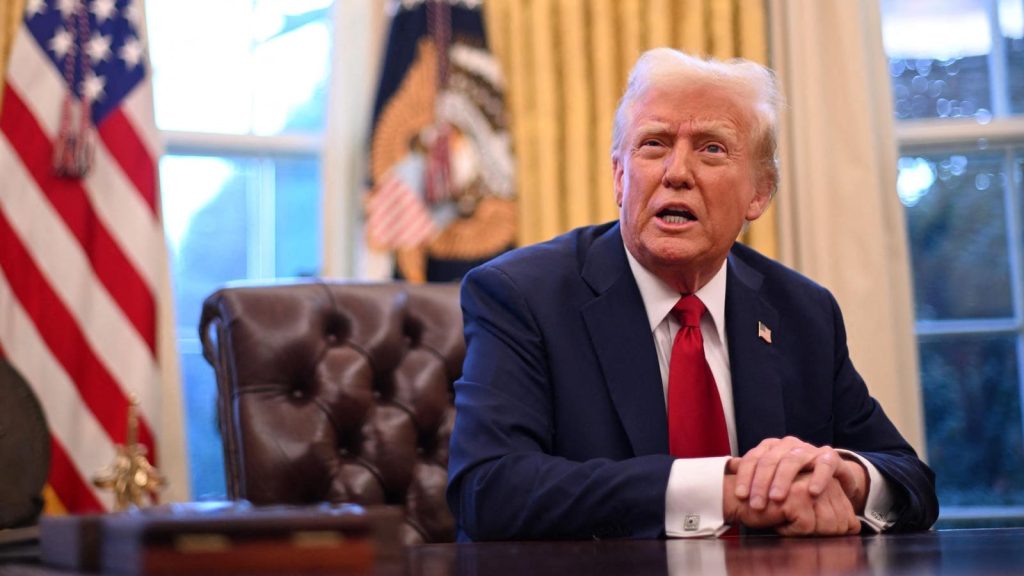The Return of Trump’s Tariff Policy: A Potential Economic Earthquake
Former President Donald Trump’s re-election campaign resurrected a familiar, and controversial, economic policy: tariffs. His plan calls for a substantial 25% tariff on imports from Mexico and Canada, along with a 10% tariff on goods imported from China, echoing his "America First" trade stance from his previous term. This aggressive approach stands in stark contrast to the prevailing views of many economists who warn of potentially severe consequences for American consumers and the economy as a whole. Trump’s rationale centers on bolstering domestic industries and bringing manufacturing jobs back to the United States, a promise that resonated with his base during his initial campaigns.
Trump’s history with tariffs is marked by the trade war he initiated with China during his first presidency. While the initial tariffs imposed in 2018 targeted a range of goods, including washing machines, solar panels, steel, and aluminum from various countries, the primary focus was on China. This escalated into a tit-for-tat exchange of tariffs, ultimately leading to a partial trade agreement in 2019. Despite this agreement, tariffs on Chinese goods remained significantly higher than pre-2018 levels. The proposed 2024 tariffs represent a substantial increase beyond those levels, potentially reigniting trade tensions and prompting retaliatory measures from affected countries.
The core of the argument against tariffs rests on the principle that these added import taxes ultimately burden American consumers. While some combination of importing businesses and foreign exporters might absorb a portion of the increased costs, studies of Trump’s previous tariffs revealed that American businesses and consumers bore the brunt of the financial impact. The Tax Foundation, a right-leaning think tank, confirmed this finding, demonstrating that the costs largely fell on domestic entities. This translates directly to higher prices for everyday goods, contributing to inflation. Goldman Sachs economists projected a discernible increase in consumer good prices for each percentage point increase in the effective tariff rate, with the added impact of domestic manufacturers potentially raising their prices due to decreased competition.
The potential economic fallout extends beyond rising prices. Economists, including those at the nonpartisan Peterson Institute for International Economics (PIIE), anticipate substantial damage to the U.S. economy. Their analysis points to a decline in consumer spending, rising unemployment, and stunted economic growth as likely repercussions of Trump’s proposed tariffs. PIIE estimates a significant annual cost to middle-class households due to these increased taxes, with lower-income households experiencing an even greater proportional impact on their after-tax income. This burden on consumers could trigger a ripple effect throughout the economy, slowing overall growth.
While Trump’s campaign emphasized job creation stemming from increased domestic manufacturing, this claim lacks substantial supporting evidence. Notably, studies have failed to demonstrate that U.S. tariffs translate to lower prices for American importers. On the contrary, evidence consistently shows that these tariffs are passed on to consumers in the form of higher prices. This undermines the central argument that tariffs benefit American consumers and raises concerns about the potential for job losses in sectors reliant on imports or exports.
The proposed tariffs also raise critical questions about their impact on specific industries and the potential for international retaliation. Canada, a major supplier of crude oil and various other goods to the U.S., would likely feel the sting of the 25% tariff. Mexico, the U.S.’s largest trading partner in terms of imports, supplies a significant amount of automotive products, electronics, and other manufactured goods. China provides a wide array of goods, from electronics and machinery to manufactured metals. The interconnected nature of global trade means that these tariffs could disrupt supply chains and increase costs for American businesses, potentially leading to job losses. Furthermore, retaliatory tariffs from these countries could damage U.S. export industries and further escalate trade tensions. The broader geopolitical implications remain uncertain, but history suggests that such trade disputes can destabilize financial markets and strain international relations.
The looming question remains whether Trump, if elected, would actually implement these tariffs across the board or adopt a more targeted approach. His past rhetoric suggests a willingness to push forward with this policy, but the specifics remain unclear. The potential for accompanying tax cuts to offset the burden on consumers has been floated but lacks concrete detail. The overall economic ramifications of Trump’s tariff plan are likely to be far-reaching and complex, potentially impacting everything from household budgets to international trade relations. The debate over the efficacy of tariffs as an economic tool continues, with economists largely opposing this approach and warning of significant negative consequences.










